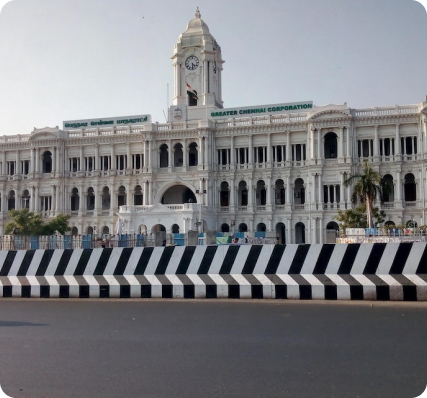
Chennai, formerly known as Madras, is the capital city of the Indian state of Tamil Nadu. It is a vibrant metropolis with a rich history that dates back more than 2,000 years. The city has been ruled by various empires and dynasties, each of which has left its mark on its culture and architecture. In this article, we will explore the history of Chennai and how it has evolved over the centuries.
The history of Chennai can be traced back to the 1st century AD, when it was a small fishing village known as Madraspatnam. It was situated on the Coromandel Coast, which was an important trading route between India and other countries in Southeast Asia. Madraspatnam was ruled by the Pallava dynasty, who were known for their architectural accomplishments such as the Shore Temple in Mahabalipuram.
In the 16th century, the Portuguese arrived in Chennai and established a settlement. They built a fort called Fort St. George, which became the center of their activities in the region. The British arrived in the early 17th century and took control of the fort. Chennai became an important center for trade and commerce, and it was one of the most prosperous cities in India during the colonial era.
The British developed Chennai into a major port city, and it became an important center for trade and commerce. They established institutions such as the Madras High Court, which is one of the oldest high courts in India. Chennai also became an important center for education, with the establishment of the University of Madras in 1857.
During the Indian independence movement, Chennai played a significant role in the struggle for freedom from British rule. The city was the site of many important events, including the Non-Cooperation Movement, the Salt Satyagraha, and the Quit India Movement. Many prominent leaders of the Indian independence movement, such as Mahatma Gandhi and C. Rajagopalachari, spent time in Chennai and worked towards India’s independence.
After India gained independence in 1947, Chennai continued to grow and develop. It became an important center for industry and technology, with the establishment of the Chennai Port Trust and the growth of the automobile industry in the region. Chennai also became a hub for the IT industry, with the establishment of the Tidel Park, which is one of the largest IT parks in Asia.
In conclusion, the history of Chennai is a fascinating journey that reflects the city’s rich cultural heritage and its evolution over time. From its humble beginnings as a fishing village to its emergence as a major port and center for trade and commerce, Chennai has played a significant role in India’s history. Today, it is a bustling metropolis that continues to grow and evolve, while preserving its unique heritage and cultural identity.